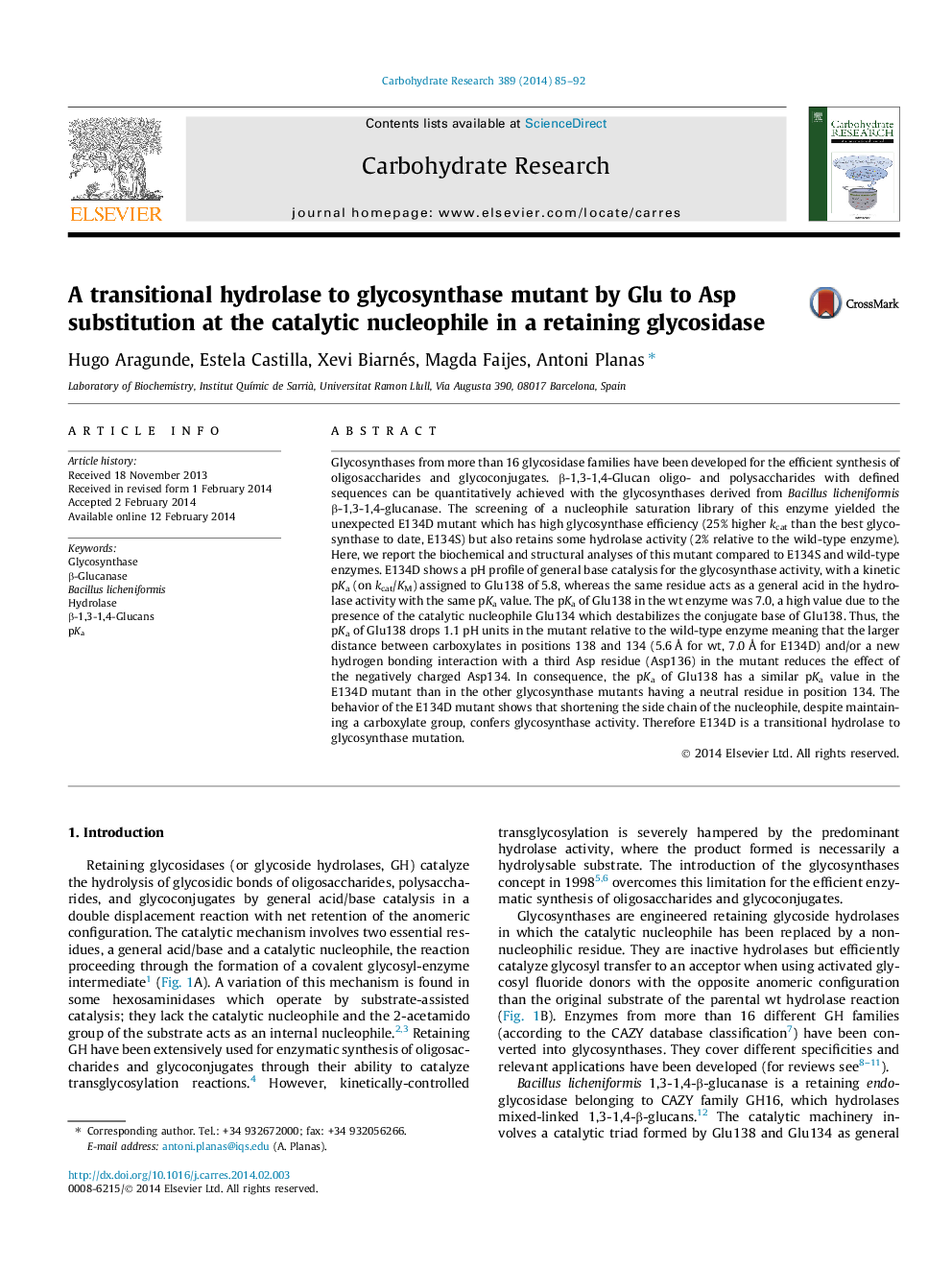| کد مقاله | کد نشریه | سال انتشار | مقاله انگلیسی | نسخه تمام متن |
|---|---|---|---|---|
| 1387657 | 1500862 | 2014 | 8 صفحه PDF | دانلود رایگان |

• The nucleophile mutant E134D of a β-glucanase behaves as a glycosynthase.
• It has a high kcat as glycosynthase but still retains some hydrolase activity.
• The pKa of E138 drops 1.1 pH units relative to the wt to behave as a general base.
• E134D has hydrolase activity at low pH and synthase activity at high pH.
Glycosynthases from more than 16 glycosidase families have been developed for the efficient synthesis of oligosaccharides and glycoconjugates. β-1,3-1,4-Glucan oligo- and polysaccharides with defined sequences can be quantitatively achieved with the glycosynthases derived from Bacillus licheniformis β-1,3-1,4-glucanase. The screening of a nucleophile saturation library of this enzyme yielded the unexpected E134D mutant which has high glycosynthase efficiency (25% higher kcat than the best glycosynthase to date, E134S) but also retains some hydrolase activity (2% relative to the wild-type enzyme). Here, we report the biochemical and structural analyses of this mutant compared to E134S and wild-type enzymes. E134D shows a pH profile of general base catalysis for the glycosynthase activity, with a kinetic pKa (on kcat/KM) assigned to Glu138 of 5.8, whereas the same residue acts as a general acid in the hydrolase activity with the same pKa value. The pKa of Glu138 in the wt enzyme was 7.0, a high value due to the presence of the catalytic nucleophile Glu134 which destabilizes the conjugate base of Glu138. Thus, the pKa of Glu138 drops 1.1 pH units in the mutant relative to the wild-type enzyme meaning that the larger distance between carboxylates in positions 138 and 134 (5.6 Å for wt, 7.0 Å for E134D) and/or a new hydrogen bonding interaction with a third Asp residue (Asp136) in the mutant reduces the effect of the negatively charged Asp134. In consequence, the pKa of Glu138 has a similar pKa value in the E134D mutant than in the other glycosynthase mutants having a neutral residue in position 134. The behavior of the E134D mutant shows that shortening the side chain of the nucleophile, despite maintaining a carboxylate group, confers glycosynthase activity. Therefore E134D is a transitional hydrolase to glycosynthase mutation.
Figure optionsDownload as PowerPoint slide
Journal: Carbohydrate Research - Volume 389, 7 May 2014, Pages 85–92